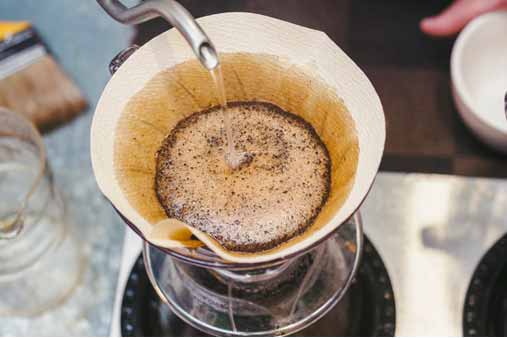How to Source Coffee from Colombia
Navigating the ins and outs of coffee sourcing can feel like an overwhelming and complicated process.
This guide summarizes what’s involved — and what to look for — when buying coffee beans from Colombia so you can make an informed decision for your roastery.
Recommended: Read our full, in-depth How to Start a Coffee Shop Business guides, inspired by coffee professionals, they will help make your coffee dreams real, from sourcing beans to hiring baristas, choosing the best POS system, forming an actual company, and everything in between.

Why Colombia?
Known for its 100 percent-washed Arabica beans, Colombia is the world’s third-largest producer of coffee with more than half a million families operating farms on 12 or fewer acres.
Colombia's coffee-growing history does, however, include some challenging periods. For example, the crash of commercial coffee prices in the 1990s wiped out half of Colombia's coffee market value. The country’s climb back into the ranks of the world’s top coffee producers meant rebuilding some of that lost market value as well as addressing the extreme violence and political unrest within its borders.
By the start of the 21st century, many of Colombia’s coffee-growing regions successfully overcame a declining coffee market and unfair prices by forming associations to advocate on behalf of its coffee farmers. ASORCAFE (Asociación de Productores de Café del Oriente Caucano) is one example of these associations, covering about 450 growers in the Department of Cauca.
Colombia's Growing Regions
Coffee beans produced by the regions within Colombia’s three main coffee-growing zones tend to share a common flavor profile.
- Northern: Traces of chocolate and nut flavors with less acidity and more body.
- Central: Herbal and fruity notes.
- Southern: Stronger hints of acidity with citrus notes.
Here’s a guide to the key characteristics found in Colombia’s main coffee-growing regions:
Antioquia
Flavor Profile: Antioquia is Colombia’s largest coffee-producing region thanks to its volcanic soil, reliable climate, and mountainside location in the northeast of the country that supports a slow ripening process. The area’s beans offer a dense, full-bodied flavor with traces of chocolate and nut as well as low acidity.
Cauca
Flavor Profile: This region is an important source of water for wildlife surrounding the Tolima and Huila mountains, which makes it an ideal location to grow coffee. Beans from this southwest area tend to have citrus notes and a higher acidity level than those grown elsewhere in the country.
Chocó
Flavor Profile: Close to the Antioquia region, this coffee-producing area is known for its rich biodiversity. Despite a long history as the nation’s top coffee-producing region during the 19th and 20th centuries, Chocó farmers often sell their coffees as Antioquian today because they mill their beans in Antioquia. The result are beans with a similar flavor profile as other coffees grown in Colombia’s northern zone.
Huila
Flavor Profile: Located in a valley between the central and eastern mountain ranges of the Andes, this region boasts an ideal coffee-producing climate. Its variation in weather and soils rich in volcanic minerals and nitrogen produces coffees with a delicate profile, bright acidity, medium body, and fruity, caramel aroma typical of beans from Colombia’s southern coffee-growing zone.
Nariño
Flavor Profile: Bordering Ecuador, this region within the Andes allows many farms to operate at more than 2,000 meters above sea level. Its varied weather patterns create good growing conditions with reliable annual rainfall of about 74 inches and 1,666 sunlight hours per year. High levels of organic material in the soil coupled with heat from the valley moving upward to combat cooler temperatures at higher elevations lead to beans with stronger hints of acidity and citrus notes.
Santander
Flavor Profile: This northern region is known for shade-grown and rainforest-certified beans that deliver hints of chocolate and nut flavors in a medium-bodied coffee.
Sierra Nevada
Flavor Profile: Another northern coffee-growing region, Sierra Nevada is known for its organic farming practices (both certified and passive). Like coffees from other regions in Colombia’s northern zone, its beans tend to have less acidity, more body, and chocolate or nutty notes.
Tolima
Flavor Profile: The political climate within this central coffee-growing region makes transportation of goods extremely difficult. As a result, its coffee production is on a much smaller scale than other regions. However, Toliman beans deliver a unique flavor profile with herbal and fruity notes.
Popular Coffee Farms in Colombia
Here’s a summary of several popular farms in Colombia. While we don’t work with these producers directly, these examples offer insight into the common practices of farms in this country.
Finca Los Nogales
- Maria Rosa Oidor, one of the many leading female coffee producers in Colombia’s agricultural scene, serves at the helm of this family-owned and -operated farm.
- A member of the ASORCAFE growers collective, Finca Los Nogales grows its coffee — a mix of Tabi, Caturra, and Colombia varietals — at 2,000 meters above sea level. It then processes its beans by fermenting them for 24 hours and drying them on raised beds.
Finca Loma Verde
- A family with deep roots in coffee owns and operates farm. In the early 20th century, the family’s ancestor, Don Alejandro Angel, became Colombia’s first major coffee exporter. The next generation to take up this family tradition has run a successful coffee business for more than three decades.
- Located in the Antioquia region, Finca Loma Verde boasts rich volcanic soil, microclimates, and a perfect altitude for growing Colombia and Caturra coffee varietals.
- It uses the washed process after harvesting its coffee cherries, and then follows that with two days of mixed fermentation and finishing by drying the beans in a silo at 40 degrees Fahrenheit.
Finca El Naranjal
- Bordering Ecuador as well as a mountainous region with five neighboring volcanoes, this farm has an ideal climate for coffee growth due to the humidity and temperature levels at its location 1,600 meters above sea level.
- Maria Nelly Chavez, who started picking coffee and now owns four hectares of Castillo and Caturra varietals, runs this operation.
- Staff process the farm’s coffee using a 24-hour fermentation cycle and then air-dry the beans on the farm’s patios.
Key Differences Among Origin Countries
The main differences between each coffee-producing country include the soil, elevation, and temperature associated with farms growing coffee plants.
Fertile soil is essential for producing high-quality coffee. On farms with higher soil fertility, coffee plants can produce larger yields and better defend themselves against disease — especially important when growing Arabica beans, which are susceptible to diseases like leaf rust. Yet, a soil’s fertility largely depends on the amount of volcanic ash, clay, and/or limestone it contains. Volcanic ash, for example, adds valuable minerals, such as feldspar, quartz, magnesium, cristobalite, and tridymite. Similar to the farming of wine grapes, a soil’s nutrient content plays a large role in a plant’s health and the flavor profile of its fruit.
“In order for a coffee plant to produce 100 pounds of green coffee (1 quintal), it must extract from the soil approximately 1.45 kilograms of nitrogen, 0.28 kilograms of phosphorous, and 1.74 kilograms of potassium.” – Luis Alvarez Welchez, manager and agronomist, ProSuelos Initiative
A farm’s altitude, in addition to its soil conditions, directly impacts the flavor profile of coffee grown there. This is because altitude affects the temperature in which coffee plants grow and temperature can boost or hinder a plant’s ability to absorb nutrients from the soil. Moreover, coffee plants growing at higher altitudes and lower temperatures also can photosynthesize longer. This allows the plant to metabolize nutrients in the soil and produce bigger, healthier cherries. The end result is a desirable hard coffee bean with a high sugar content. In contrast, plants that absorb fewer nutrients due to poor soil and/or hotter growing temperatures tend to produce softer beans with low sugar content.
There are, however, exceptions to this general rule. Hawaiian coffee grows at a relatively low elevation, but, due to the island chain’s location far north of the equator and ample shade to guard plants from the sun, it produces high-quality coffee at a lower altitude.
Final Considerations
If you plan to buy your coffee beans from an importer, the process is fairly straightforward. Contact your potential importer to set up a “cupping” event to sample their coffees and then work with them to place your order.
If you prefer to source beans directly from a coffee farm, there’s a bit more work ahead of you. First, you must travel to the farm(s) in order to “cup” their coffee before you make an order. While this “cupping” trip will enable you to start developing relationships with your farmer(s), you will need to hire a translator to accompany you unless you speak the local language.
If you decide to buy coffee beans from a specific farm after your “cupping” trip, you must then connect with an importer to help you with the shipping and handling of your coffee. Why? Because importers have expertise not only in managing customs and duties imposed on coffee shipments, but also on how to properly transport green coffee beans across borders based on the specific varietals and regions from which you order.
When selecting an importer, keep these considerations in mind:
- Storage is a major factor in ensuring the quality of your beans upon arrival. Do some research about the practices of your importer’s transportation services, including temperatures during transport, shipping time, and handling of your product.
- Minimums are another factor in ordering for your business. If an importer has a larger minimum than you are able to roast or store in a short amount of time, you could end up wasting money and product.
- The frequent availability of beans from specific origins also is important. Ensure you’re able to use a variety of coffees and origins provided by your importer as lots can differ wildly depending on season, climate, and politics.
- Some importers also can help you ensure you buy fair trade coffee for your business. For example, Crop to CupTM Coffee Importers, Pachamama Coffee, and Copan Trade LLC are just a few importers offering this service.
Pro Tip: Ask around in your community and online before choosing an importer to gain an understanding of their practices.

